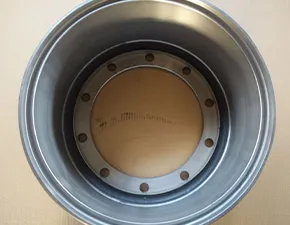
-
 Afrikaans
Afrikaans -
 Albanian
Albanian -
 Amharic
Amharic -
 Arabic
Arabic -
 Armenian
Armenian -
 Azerbaijani
Azerbaijani -
 Basque
Basque -
 Belarusian
Belarusian -
 Bengali
Bengali -
 Bosnian
Bosnian -
 Bulgarian
Bulgarian -
 Catalan
Catalan -
 Cebuano
Cebuano -
 Corsican
Corsican -
 Croatian
Croatian -
 Czech
Czech -
 Danish
Danish -
 Dutch
Dutch -
 English
English -
 Esperanto
Esperanto -
 Estonian
Estonian -
 Finnish
Finnish -
 French
French -
 Frisian
Frisian -
 Galician
Galician -
 Georgian
Georgian -
 German
German -
 Greek
Greek -
 Gujarati
Gujarati -
 Haitian Creole
Haitian Creole -
 hausa
hausa -
 hawaiian
hawaiian -
 Hebrew
Hebrew -
 Hindi
Hindi -
 Miao
Miao -
 Hungarian
Hungarian -
 Icelandic
Icelandic -
 igbo
igbo -
 Indonesian
Indonesian -
 irish
irish -
 Italian
Italian -
 Japanese
Japanese -
 Javanese
Javanese -
 Kannada
Kannada -
 kazakh
kazakh -
 Khmer
Khmer -
 Rwandese
Rwandese -
 Korean
Korean -
 Kurdish
Kurdish -
 Kyrgyz
Kyrgyz -
 Lao
Lao -
 Latin
Latin -
 Latvian
Latvian -
 Lithuanian
Lithuanian -
 Luxembourgish
Luxembourgish -
 Macedonian
Macedonian -
 Malgashi
Malgashi -
 Malay
Malay -
 Malayalam
Malayalam -
 Maltese
Maltese -
 Maori
Maori -
 Marathi
Marathi -
 Mongolian
Mongolian -
 Myanmar
Myanmar -
 Nepali
Nepali -
 Norwegian
Norwegian -
 Norwegian
Norwegian -
 Occitan
Occitan -
 Pashto
Pashto -
 Persian
Persian -
 Polish
Polish -
 Portuguese
Portuguese -
 Punjabi
Punjabi -
 Romanian
Romanian -
 Russian
Russian -
 Samoan
Samoan -
 Scottish Gaelic
Scottish Gaelic -
 Serbian
Serbian -
 Sesotho
Sesotho -
 Shona
Shona -
 Sindhi
Sindhi -
 Sinhala
Sinhala -
 Slovak
Slovak -
 Slovenian
Slovenian -
 Somali
Somali -
 Spanish
Spanish -
 Sundanese
Sundanese -
 Swahili
Swahili -
 Swedish
Swedish -
 Tagalog
Tagalog -
 Tajik
Tajik -
 Tamil
Tamil -
 Tatar
Tatar -
 Telugu
Telugu -
 Thai
Thai -
 Turkish
Turkish -
 Turkmen
Turkmen -
 Ukrainian
Ukrainian -
 Urdu
Urdu -
 Uighur
Uighur -
 Uzbek
Uzbek -
 Vietnamese
Vietnamese -
 Welsh
Welsh -
 Bantu
Bantu -
 Yiddish
Yiddish -
 Yoruba
Yoruba -
 Zulu
Zulu
brake drum vs rotor
Brake Drum vs. Rotor Understanding the Differences and Choosing the Right Option
When it comes to vehicle braking systems, two primary components are often discussed brake drums and rotors. Each plays a crucial role in vehicle safety and performance, yet they operate differently and cater to various needs. Understanding these components is essential for any car owner or enthusiast seeking to maintain or upgrade their vehicle’s braking system.
Brake Drums The Basics
Brake drums are round components made of metal that house the braking mechanism. When the driver presses the brake pedal, brake shoes inside the drum expand against its inner surface, creating friction that slows down the vehicle. Brake drums are typically seen in older vehicles and many lighter vehicles due to their simplicity and effectiveness.
One of the advantages of brake drums is their ability to handle heat well. They dissipate heat evenly, which can lead to consistent performance over time. Drums are also generally more affordable to manufacture and replace than rotors, making them a cost-effective option for many drivers. However, there are downsides; brake drums can be prone to fading under extreme conditions, and their design often leads to reduced performance in terms of stopping power compared to disc brakes.
Brake Rotors The Modern Choice
Brake rotors, also known as brake discs, have gained popularity in recent years, particularly in high-performance and larger vehicles. Unlike the drum brake system, rotors feature a smooth, flat surface that allows brake pads to clamp down when braking. This setup provides more efficient heat dissipation during braking, reducing the risk of brake fade.
brake drum vs rotor

Rotors come in various designs, such as vented, slotted, or drilled, each catering to specific performance needs. Vented rotors, for example, have a built-in hollow structure that enhances airflow and cooling, while slotted or drilled rotors allow for better water dispersion and less build-up of debris. These features help improve overall stopping power and responsiveness, making rotors a preferred choice for performance vehicles or those frequently driving in demanding conditions.
Choosing Between Drums and Rotors
The choice between brake drums and rotors often comes down to personal needs and driving habits. For everyday drivers who prioritize affordability and sufficient stopping power for standard use, brake drums might be sufficient. On the other hand, performance-oriented drivers or those who frequently travel hilly terrains may benefit from the superior stopping power and cooling efficiency that rotors offer.
Additionally, maintenance plays a role in this decision. Rotors generally require more upkeep, as they can warp or become uneven over time, whereas brake drums are typically more durable. However, the long-term performance benefits of rotors can justify the additional maintenance.
Conclusion
In summary, both brake drums and rotors serve essential purposes in vehicle braking systems, each with distinct advantages and disadvantages. Understanding their differences is crucial for making informed decisions based on your driving needs, budget, and performance expectations. Whether choosing the cost-effective brake drum or the high-performance brake rotor, ensuring your vehicle's braking system is in optimal condition is paramount for safety on the road.
-
Rear Drum Brakes Maintenance TipsNewsAug.04,2025
-
Key Components Affecting Brake Drum FunctionNewsAug.04,2025
-
Important Inspection for Truck Drum BrakeNewsAug.04,2025
-
How to Prepare for Changing Rear Drum BrakesNewsAug.04,2025
-
Essential Tools for Cleaning Drum Brakes ProperlyNewsAug.04,2025
-
Brake Drum Function GuideNewsAug.04,2025
-
Safety Features of Red Brake DrumsNewsAug.01,2025
